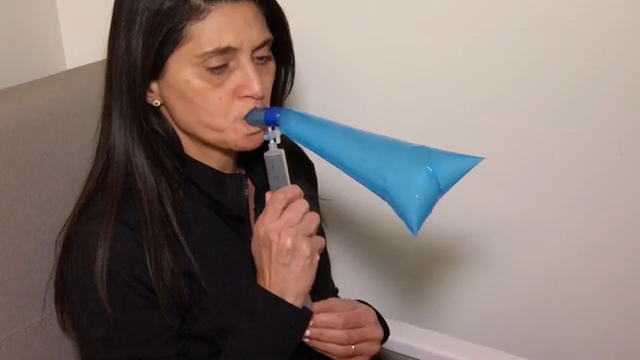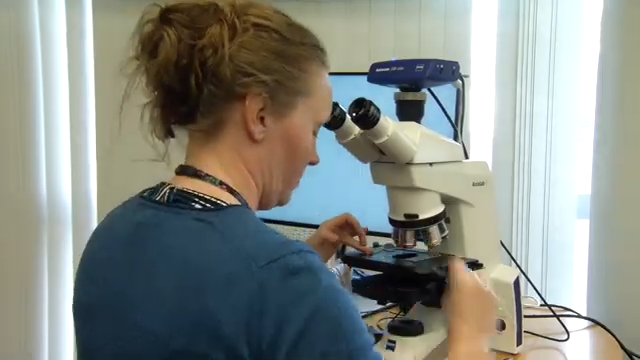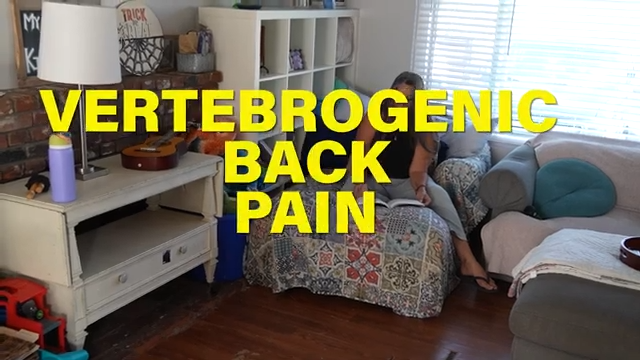SEATTLE, Wash. (Ivanhoe Newswire) — About 54 million Americans suffer from the aches and pains of arthritis. Treatments range from pain meds to injections to surgery. But now there’s a new option for knee pain and it comes from the fluid that surrounds a baby in a woman’s womb.
Running is what keeps 77-year-old Marty Ciesielczyk feeling young.
“For me, it’s just enjoyable, and if you’re not a runner, then you would have no idea what I’m talking about,” Ciesielczyk said.
But Ciesielczyk’s active lifestyle was in jeopardy when knee pain took over.
“When you got to lay on the floor to get dressed, it’s tough,” Ciesielczyk explained.
Ciesielczyk had arthritis. It happens when there’s a loss of cartilage in the joint.
Adam Yanke, M.D., orthopedic surgeon at Midwest Orthopedics at Rush, told Ivanhoe, “It’s like a tire, and as you slowly lose rubber on the tire, it wears away. You might need to have the tire replaced at some point.”
Ciesielczyk’s arthritis was too advanced for a scope procedure but not bad enough for a joint replacement. So, he enrolled in a study testing whether amniotic fluid, which surrounds a growing baby in the uterus, could help his pain.
“Amniotic products come from patients that are having healthy, elective c-sections, and they choose to donate these products at the time of the delivery,” Yanke said.
The fluid is injected directly into the knee. It’s thought to increase tissue healing and lower inflammation. Ciesielczyk received a placebo during the study, but then chose to have the amniotic fluid when it ended.
“I mean I didn’t care if it was pixie dust, as long as my knee was going to feel better,” Ciesielczyk said.
He went from not being able to get dressed to jogging about a week after having the injection.
“This morning, I ran three, three miles, and I had no problem at all,” Ciesielczyk said.
And he doesn’t plan on slowing down any time soon!
Amniotic fluid is also being used to treat ulcers in the eye. Rush University will be enrolling patients for a larger follow-up study on amniotic fluid for joint pain in the future.
Contributors to this news report include: Cyndy McGrath, Executive Producer, Julie Marks, Field Producer; Roque Correa, Editor.
To receive a free weekly e-mail on Medical Breakthroughs from Ivanhoe, sign up at: http://www.ivanhoe.com/ftk
MEDICAL BREAKTHROUGHS
RESEARCH SUMMARY
TOPIC: KNEE PAIN RELIEF FROM A WOMAN’S WOMB?
REPORT: MB #4680
BACKGROUND: More than 54 million people in the United States have arthritis and it is the leading cause of disability. Sixty percent of adults with arthritis are of working age, 18 to 64 years. The most common form of arthritis is osteoarthritis. Gout, rheumatoid arthritis, and lupus are other forms of arthritis. Symptoms are pain, aching, stiffness, and swelling in or around the joints. Rheumatoid arthritis and lupus can affect multiple organs and cause widespread symptoms. By the year 2040, the number of people expected to have doctor-diagnosed arthritis is more than 78 million. Doctor-diagnosed arthritis is more common in women (26 percent) than in men (18 percent). Arthritis and other non-traumatic joint disorders are among the five most costly conditions among adults 18 and older.
(Source: www.cdc.gov/chronicdisease/resources/publications/factsheets/arthritis.htm and https://www.arthritis.org/about-arthritis/understanding-arthritis/arthritis-statistics-facts.php)
DIAGNOSING ARTHRITIS: The doctor will check joints for swelling, redness and warmth and see how well you can move your joints. The analysis of different types of body fluids can help pinpoint the type of arthritis. Doctors commonly analyze blood, urine and joint fluid. Some tests may include x-rays which show cartilage loss, bone damage and bone spurs. CT scanners take x-rays from many different angles and can visualize both bone and the surrounding soft tissues, while an MRI can produce more-detailed cross-sectional images of soft tissues such as cartilage, tendons and ligaments. Finally, an ultrasound uses high-frequency sound waves to image soft tissues, cartilage and fluid-containing structures near the joints and helps guide needle placement for joint aspirations and injections.
(Source: https://www.mayoclinic.org/diseases-conditions/arthritis/diagnosis-treatment/drc-20350777)
NEW TREATMENT: Your bone marrow makes mesenchymal stem cells, or MSCs. They are known to grow into new tissues, including cartilage. By gathering these cells and injecting them into the knee joint, the hope is that they will give growth to new cartilage and reduce inflammation. Clinical trials are still going on and most studies are still early. A review published in 2016 in BMC Musculoskeletal Disorders concluded that MSC-based therapies offer an “exciting possibility” for treatment, but further studies need to be done on how they can best be used and how well they work. They are also known to be very expensive.
(Source: https://www.webmd.com/osteoarthritis/knee-arthritis-treatment-advances#1)
FOR MORE INFORMATION ON THIS REPORT, PLEASE CONTACT:
Ann Pitcher, Public Relations
630.234.4150
If this story or any other Ivanhoe story has impacted your life or prompted you or someone you know to seek or change treatments, please let us know by contacting Marjorie Bekaert Thomas at mthomas@ivanhoe.com



